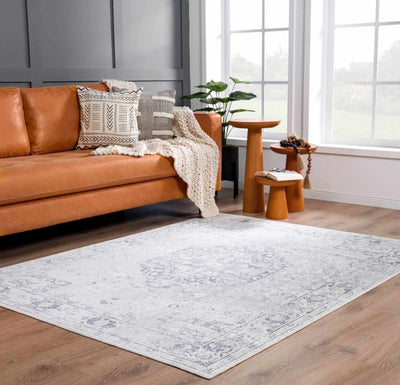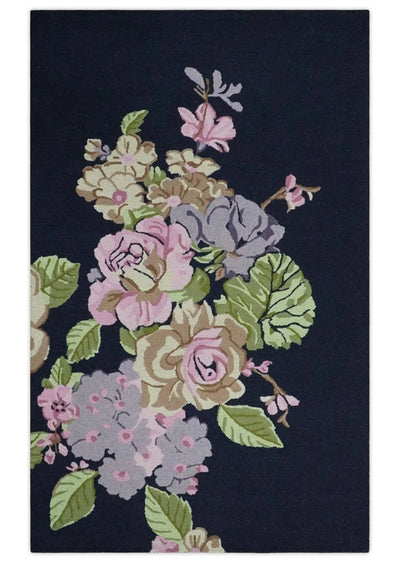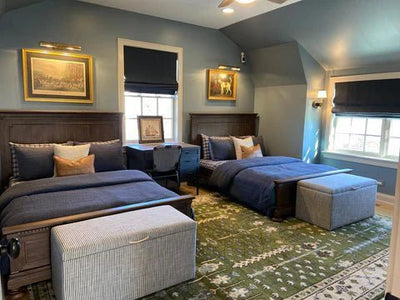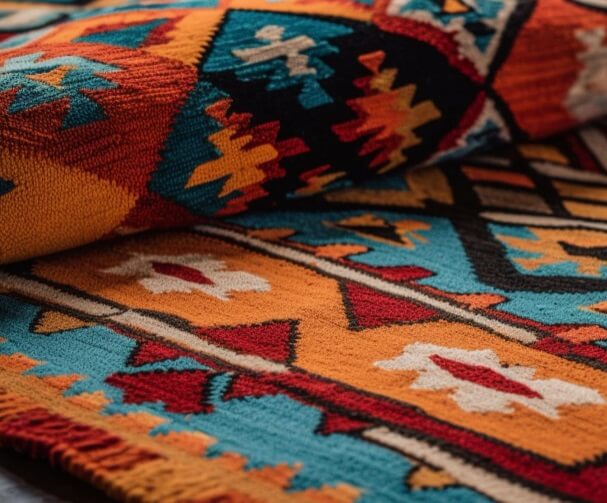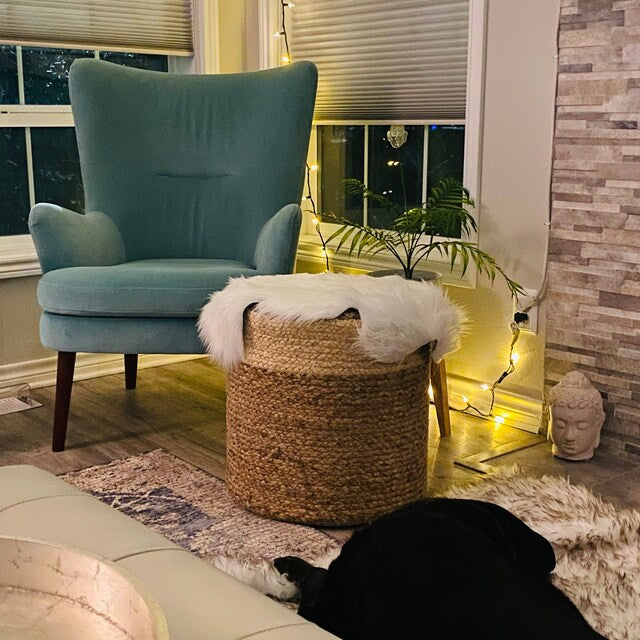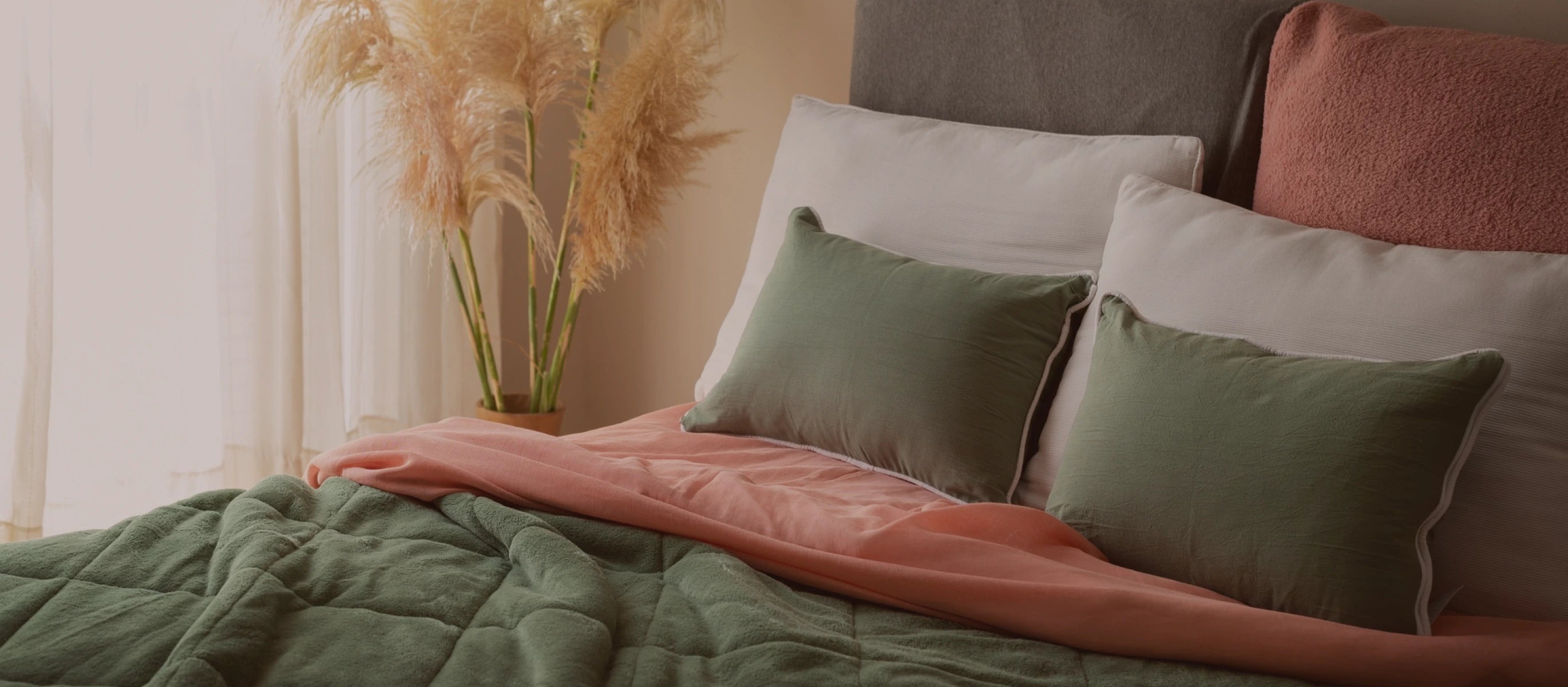Types of Persian Rugs: A Guide to Help You Choose the Right One
Persia, which is modern-day Iran, has layers of rich history, art, and craftsmanship, and Persian rugs are prime examples of the same. The unique weaving technique and intricate designs of these rugs are two of the prime reasons that still make them part of the premium rug categories.These luxurious rugs, often made from wool, cotton, or silk, provide both durability and elegance, with wool being one of the most common and soft rug materials used
The weaving tradition of Persian rugs dates thousands of years back when mostly shepherds and nomads were involved in this occupation. Over the years and several invasions later, Persian rug designs are no longer confined to just one part of the world.
To find some of the finest pieces of these rugs, you can check out the collection on The Rug Decor and buy your favorite items. This blog gives you a deeper insight into the various types of Persian rugs, how they are made, and the factors to determine the best ones.
When choosing between rug materials, understanding the difference between polypropylene vs. wool rugs is essential. Wool is known for its natural fibers and durability, while polypropylene offers a more affordable, synthetic alternative.
Before proceeding further, you must note that there are several categories of these rugs. This categorization is primarily based on the various regions of Iran that define the variation in motifs, color palettes, different Persian rug patterns, and more. Learn about more rug terms on our rug glossary page.

Image source:- Union of Indo-Iranian Nations
What are Persian carpets or rugs?
Persian rugs or Persian carpets are the ones that are either handwoven or hand-knotted by weavers in Iran. While the hand-knotted ones are one of the most popular globally, the handwoven ones, also called Kilim are quite stunning too. Carpets are usually rugs that are larger in size, but you can use both terms interchangeably.
You must note that the location plays a big factor when it comes to understanding the patterns, shapes, colors, and textures of rugs. For example, a carpet featuring traditional Persian designs will not be considered authentic till it was woven within the borders of Persia (including areas that are now part of Iran). You will also find beautiful Persian-Oriental rugs, that may sound a little off. However, these are called so due to their weaving location.
How are Persian rugs made?
Making Persian rugs is nothing short of artwork that requires the proper skill set and time. Its unique and fine designs, along with the premium fabrics, are two of the primary reasons that justify the popularity of these rugs.
It is a fact that the weaving technique of these beautiful rugs is unmatchable. Moreover, these are skills that generations, one after the other, have inherited and refined continuously
Materials
Wool, cotton, and silk are three primary fibers used in making Persian rugs. Wool is also one of the oldest options used to make several Persian rug types, as the best quality was available from the higher regions of Iran.
Closely following the durable and soft handspun wool rugs are the cotton ones, which are still highly preferable due to their comfort level, durability, and easy accessibility of the fabric.
Most carpets used wool as their foundation before switching to cotton, which presented a challenge. The majority of wool foundation carpets were made by tribal or nomadic groups. Little villages rather than large towns were the sources of these oriental rugs. The problem was that the rug was shrinking.
This is a concern for many rug owners because the base of every rug dictates the size and overall proportions. Despite the fact that this is a known problem, there is a fix that will undoubtedly help to stop rug shrinkage.
On the other hand, silk is a premium fabric, and therefore, rugs made out of it are limited in number. Additionally, silk is often mixed with other fabrics to achieve more fabulous detailing in terms of designs and texture.
Designs
Persian rug designs are one of the most impressive features of these products. The usage of medallion designs, vibrant colors, and rich patterns are all trademark symbols that define authentic and traditional Persian rugs.
Some typical Persian rug patterns include religious images, flowers and trees, daily life imagery, historical monuments, royal life, abstract Arabic designs, and more. Some of the most traditional designs include that of the Paradise Garden, Life Tree depictions, and trees such as pomegranates, cypress, weeping willow, and more.
If you can understand the deeper meaning of the patterns and symbols used in these rugs, they are more likely to translate into the life stories of weavers. Experts who can analyze various Persian rug styles can even trace the product's origin.
You will be surprised to know that only by studying these details it is possible to point out the historical insights and geographical source of the rug.
Types of Persian rug Designs
There are endless reasons why people love Persian rugs globally. These beautiful rugs were used as premium gifts in the yesteryears. The royals used these as prayer mats, gifts for delegates and diplomats, as symbols of tribal allegiance, and more. The antique rugs were exclusive, and no design matched with another, a feature that is uncommon when it comes to modern rugs..
Check out these stunning Persian rug styles to find the perfect one to place in your home and office. Each of these showcases a different type of design despite having the same origin.
Pazyryk
According to historical sources, the first Pazyryk rug was found from the grave of a Scythian man. To date, it is considered as the oldest proof of handwoven carpet featuring Persian design. However, this carpet had an inscription marked 5th Century BC, which gave rise to an argument. According to artisans and historians, the technique of weaving Persian rugs was older and as a result of constant evolution, this Pazyryk rug somehow ended in the grave of the Scythian man.
Bhaktiari
These rugs are named after an ancient tribe of nomadic people living in the Zagros mountains. They are made out of thick and soft wool that is incredibly strong and durable too. The Bhaktiari style traditionally included geometric rugs that evolved into more vibrant florals inspired by other country regions. The modern Bhaktiari-style Persian rugs feature delicate latticework and other flora and fauna motifs.
Bakshayesh
Bakshayesh or Bakshaish is part of modern-day Azerbaijan in Persia and is considered the country's oldest village of rug weavers. Apart from being supremely artistic, these Persian rug patterns include imagery of traditional tribal livelihood and other classical Irani designs.
Also called Bakshish, these rugs are generally slightly larger than the other regions. Furthermore, the designs focus on central folklore characters in smaller forms and other rustic, asymmetrical motifs.
When it comes to the common usage of colors, you will find Bakshayesh rugs in neutral shades such as ivory, white, beige, and more, as well as muted, warm, and metallic hues.
Bijar rugs
The origin of Bijar rugs is a market hub in Northwestern Iran, some 150 miles south of Tabriz. Due to a conventional Turkish knot, Bijar rugs resemble Kurdish carpets with thick piling.
They are highly durable and have a long lifespan as a result. The mound is so tightly compacted that it stands upright vertically. Diamond-shaped medallions, and floral and vinery motifs, among other elements, are frequently used in classic designs
Esfahan
The capital of Persia was Isfahan, also spelled Esfahan, from 1598 to 1722. The city, rich in Safavid-era Islamic architecture from the 16th century, is now a recognized UNESCO world heritage site.
Like other city-woven items, Isfahan-style Persian rugs often have a flowery pattern with a central medallion and four corner parts. These Isfahans are often hand-woven with beautiful wool and silk embellishments.
Isfahani weavers are distinguished by their keen concern for achieving technical perfection. They consequently constantly produce very high-quality carpets regarding knot count and symmetry.
Farahan
A small village in central Iran is known by the name of Farahan. It is well known worldwide for some of the finest rugs produced throughout the 19th century. The Farahan rug was designed initially with the high-end US market in mind.
Today's Farahan rugs are renowned partly for a color nuance and detail that has proven impossible to replicate. And with good reason. Old Farahan carpets' naturally colored hues have a fascinating history.
The rugs are prized for their sophisticated geometric designs and color, most notably for their several variations on the classic Herati pattern, which features core flowers that branch outward in infinite bending leaves.
Gabbeh
The geometric designs and narrative components of Gabbeh carpets are well known. "Gabbeh" is translated as "raw, natural, or uncut" in Farsi and is produced by the southern Iranian nomadic Qashqai tribes, usually by women. The patterns frequently have rectangular shapes that encapsulate pictures of animals or the surroundings.
Heriz/ Serapi rugs
Heriz and Serapi rugs are renowned for their sturdiness and premium wool. The big, geometric medallion pattern in the center of Heriz rugs makes them easy to identify. Most of the goods made in the Heriz region are larger, with scatter carpets being very uncommon.
A rigidly rectilinear medallion design that hasn't evolved much over many years characterizes the classic Heriz. Pattern patterns repeat less frequently, the pile is dense, and the edges have a substantial double selvage.
Kashan/ Mohtashan
The central medallion ornamentation and red, blue, and beige hues make Kashan carpets distinctive. Kashan carpets are costly because of their Persian style, dense knots, and usage of premium wool. The Golden Period of Persian Weaving, which occurred under Shah Abbas, is directly traced to Kashan carpets.
Kerman
Intense red colors are standard in Kerman rugs, typically matched by beige, blue, or brown neutral tones. They frequently have an extended medallion surrounded by floral designs, as do many Persian rugs.
South-central Iran is home to Kerman—generally, a cotton foundation with an uneven knot. For western markets, contemporary Kerman rugs are frequently woven in delicate, light hues like amber, pink, and blue-gray.
Stripes, repeated motifs, antique vases, garden themes, animal shapes, and pictorial designs are just a few examples of patterns.
Khorassan/Mashad
The base of Khorasan city carpets is cotton, while the pile is wool. It has used the Persian Jufti knot since the sixteenth century. This technique speeds up the weaving process by using four warp threads instead of the usual two to tie a knot in the carpet.
Mashad carpets are renowned for their designs featuring gardens and shrubs. The Herati design is well-known in Herat carpets. Older Safavid-era forms are renowned for their palmettes, Chahar Bagh, cypress trees, Herati, lattice, and shrub motifs.
Khotan
East Turkestan's Khotan, currently Western China’s Xinjiang Province, was a renowned ancient hub for rug design. The first spot to cultivate silk outside of China was in Khotan, a hub along the Silk Road for thousands of years. Khotan, at the time a crossroads of cultures, evolved its own intricately detailed style by the 18th and 19th centuries.
Antique Khotan rugs are among the most abundant and exquisite available. Compared to other East Turkestan carpets, the rugs made in Khotan register as being significantly more international.
Khotan rugs skillfully combine Chinese and Persian themes and design elements into a hybrid style, drawing on their exceptional proximity to China and Persia. Therefore, you'll find vibrant mixed hues and a ballet between opposites in Khotan carpets. Khotan rugs are often made of either wool or silk and are woven with asymmetrical knots.
They are typically long and thin with an identifiable glossy finish. Grand medallions, ornate borders, and pomegranate images were frequently incorporated into old Khotan rugs.
Malayer
An angular northwest style most characterized by its variety in style and color is embodied by antique rugs from the Malayer region.
These carpets have a stunning variety of classic carpet designs, from lozenge-shaped medallions to thick allover motifs, all set against stylish monochrome backgrounds.
Malayer carpets are typical examples of authentic Herati designs and are often constructed on cotton foundations. Even though sizes might vary, most rugs have small to medium sizes, nomadic patterns, and red tones as their primary color.
Malayer rugs can range in quality from good to poor, depending on the pattern, wool quality, age, and knot count.
Sarouk
Another excellent option in the Persian rug market is sarouk carpets. The Sarouk is a unique item with Iranian roots that is highly striking and has a cotton base and distinctive, well-balanced hues. The Sarouk is considered one of the region's top-quality carpets among those made in Iran.
Cotton, not wool, is the material that all Sarouk rugs share. The Sarouk has a light texture with a blue weft and cotton basis, making it challenging to replicate. In addition, the rug's deep pile and light color make for a cozy accessory with a smooth exterior.
Senneh
Geometric designs are the highlights of Persian Senneh carpets. They are famous for their deep crimson, navy, and brown color palettes and are made in the Kurdistan province's mountains in northwest Iran. The pile is constructed of fine wool yarn, and the warp and weft are made of less complex cotton. Rugs that are primarily coarse and durable enough for daily usage.
Sultanabad/ Mahal
Sultanabad carpets from the 19th and early 20th centuries are now among the most sought-after Persian town weavings because of their widespread appeal to collectors and interior decorators.
These two crucial buyer demographics are drawn to them for their exceptional examples of simple, startlingly modern designs and their elegant, frequently quirky, and highly decorative look. The best vintage Sultanabad rugs are now extremely hard to come by on the global market.
The best examples of Sultanabad ancient carpets have expansive, incredibly distinctive variations on traditional Persian allover designs like the Herati, the Mina Khani, and the Harshang, frequently in soft, luminous pastels and earth tones.
Tabriz
From one of the first rug-weaving regions came the Tabriz rugs. They were characterized by their dense knots and short pile. There are countless intricate patterns on Tabriz carpets. It includes various curvilinear patterns, gardens with various floral themes, hunting scenes, and all sizes and forms of medallions.
Lori
The same-named region of Loristan, which is in the western part of Iran, is where Lori rugs are produced. The hand-knotted carpets are of exceptional quality. Often, these are vibrant carpets with floral and geometric designs.
The weaving of Lori carpets is done by hand using traditional techniques passed down through the ages from one generation to the next. The flat-woven nature of Lori rugs means they are textiles devoid of the pile. A flat weave is a weaving method without the use of knots.
How to identify a Persian rug?
Geometric
Rugs with geometric patterns are woven by people who are practical and rustic. Most of them are nomadic wanderers from regional tribes. Each group is autonomous and isolated from the others.
Unlike geometric motifs, nomadic rugs typically have straightforward designs. It consists of several medallions and features mainly geometric, angular, crisp, and sharp motifs. Rarely are these patterns plotted out or mapped and are instead more asymmetrical, showcasing natural artistry and skills.
Floral
The floral category is quite the opposite of the geometrical one. These rugs will have elaborate, intertwined, flowing patterns, representing generations of culture and refinement. The dominant motif in Oriental art and handiwork is a floral pattern, which proves that nothing in these rugs is rustic, unlike the previous category.
Before the rug is started, the pattern, size, and color palette are meticulously selected. The weaver imagines the final row, which will finish their job, while they tie the first row of knots.
Conventionalized
Conventionalized patterns are the third option, which falls under the intermediate between city dwellers and nomads. These weavers are mostly farmers by profession, and they use the long winter months to weave carpets to survive the bitter weather. Every weaver's unique signature will be seen on each rug.
For those exploring rug options, the craftsmanship of hand-tufted rugs provides a more affordable alternative to hand-knotted rugs. Hand-tufted rugs are created using a tool that punches the wool into a canvas, speeding up the process without sacrificing quality
Among the various styles of rugs, shaggy rugs stand out for their plush, high-pile texture, making them a popular option for cozy spaces. These rugs add a touch of luxury and softness to any room.
knowing how to store a rug properly is crucial to maintaining its condition. Proper storage techniques, such as rolling the rug and protecting it from moisture, ensure that it remains in good shape until you're ready to use it again.
FAQs
How to clean a Persian rug?
The best way to clean Persian rugs is to soak a sponge in a mixture of mild detergent and water and then scrub the rug. After the scrubbing, you can run the rug under cold water and then air dry it properly.
Why a Persian rug is expensive?
The usage of premium fabrics such as wool and silk, delicate designs and symmetrical weaves, natural dyes, and more are some of the reasons that make Persian rugs expensive.
How long do Persian rugs last?
Surprisingly, Persian rugs can last anything from 20 to 200 years. However, it all depends on the amount of care, foot traffic, and overall quality of the same.
How can you tell if a Persian rug is authentic?
An authentic Persian rug will never have sewn outer fringes. In any other case, there is a maximum probability that the product is not genuine.
How and what are Persian rugs made of?
Persian rugs are primarily made of fabrics such as wool, cotton, and silk. The making uses a unique and traditional weaving technique in which the knotting is done manually for top-notch precision.
Explore the Persian rugs collection at The Rug Decor
If you are looking for top-quality Persian rugs, you are at the right place because The Rug Decor offers the most exclusive collection of Persian rug designs, which includes a range of stunning colors, fabrics, and knots.
